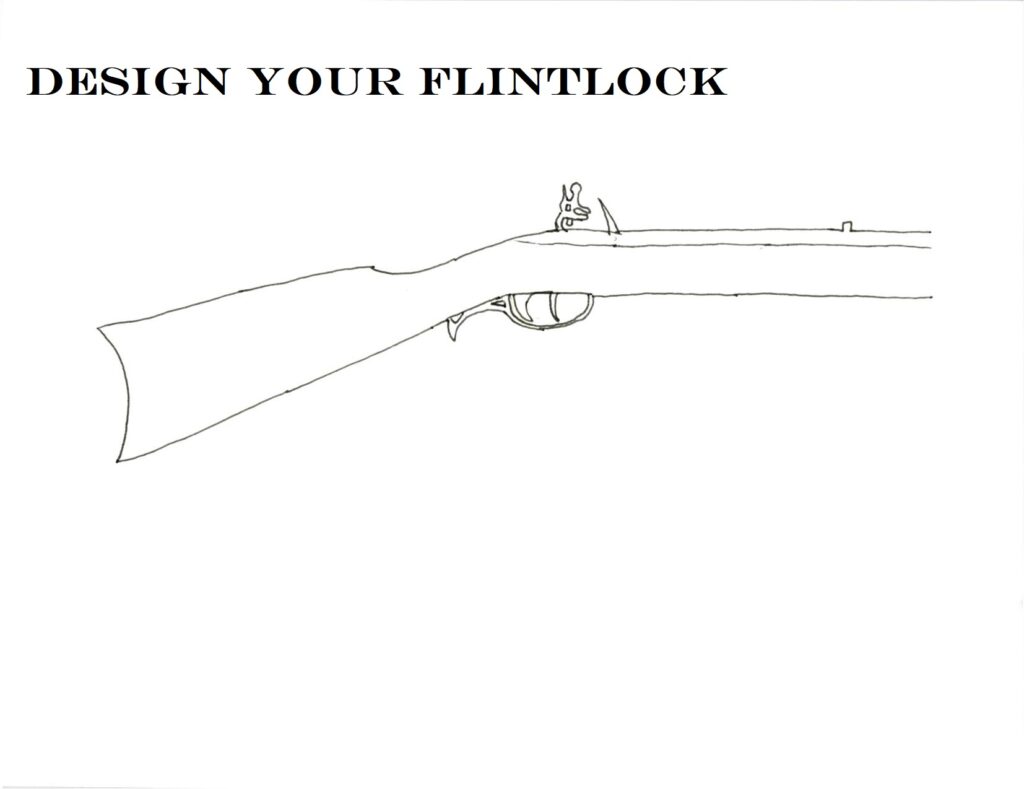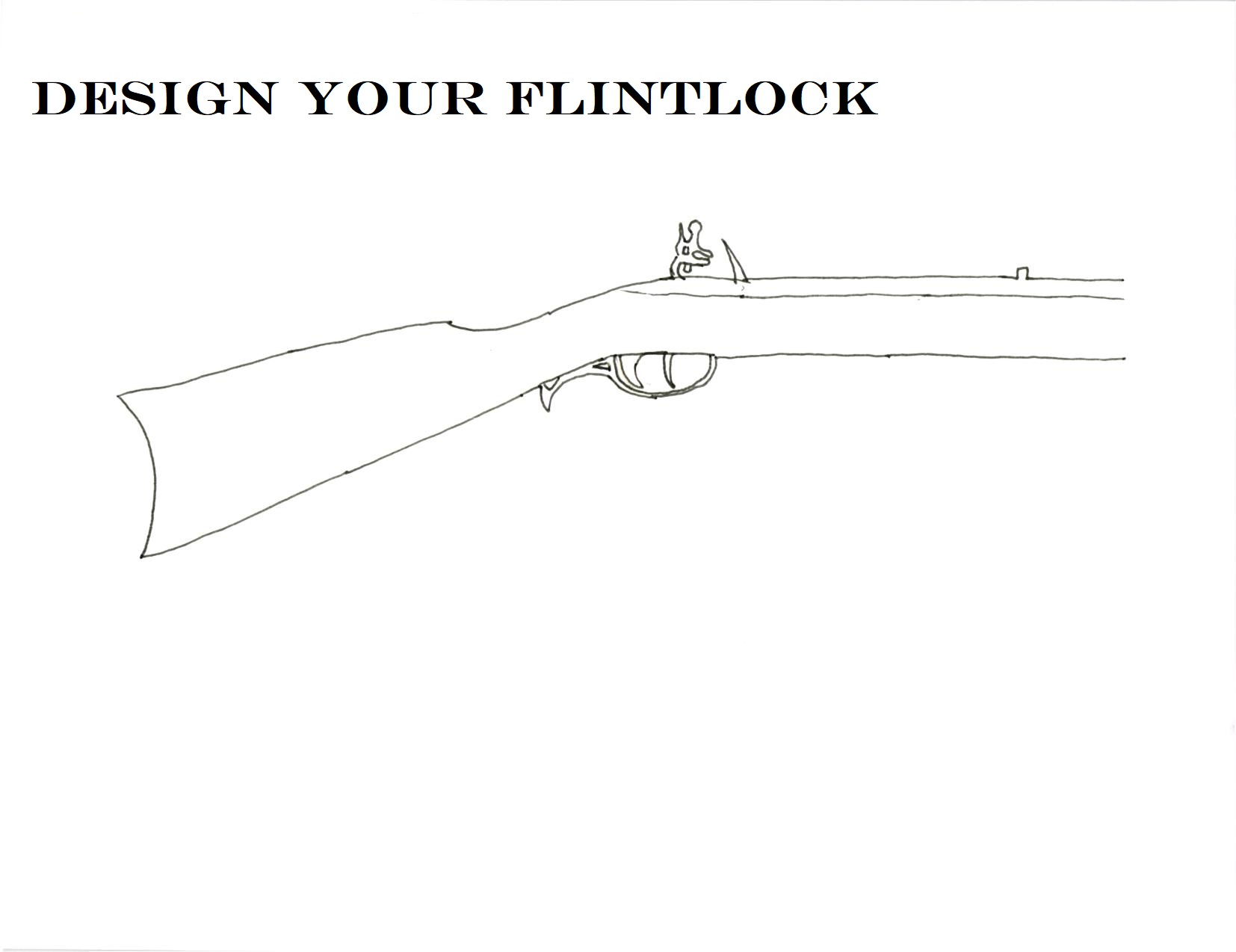
Mastering the Flintlock Pistol: A Comprehensive Guide to Loading and Firing
The flintlock pistol, a quintessential firearm of the 18th and early 19th centuries, holds a significant place in history. From military conflicts to personal defense, its reliability (when properly maintained and operated) made it a popular choice. However, unlike modern firearms, the flintlock requires a specific loading and firing procedure. This comprehensive guide will walk you through each step, ensuring you understand the process and can appreciate the historical significance and potential challenges of using this fascinating weapon.
Understanding the Flintlock Mechanism
Before delving into the loading and firing process, it’s crucial to understand the basic mechanics of a flintlock pistol. The key components are:
- The Lock: This is the heart of the flintlock system. It consists of several parts including the hammer (or cock), frizzen (or battery), pan, and sear.
- The Hammer (Cock): This holds the flint and strikes the frizzen.
- The Frizzen (Battery): A hinged piece of steel that, when struck by the flint, creates sparks. It also uncovers the pan.
- The Pan: A small depression that holds the priming powder.
- The Sear: A mechanism that holds the hammer in the cocked position and releases it when the trigger is pulled.
- The Barrel: The long metal tube through which the projectile travels.
- The Touch Hole (or Vent): A small hole that connects the pan to the main powder charge in the barrel.
- The Ramrod: Used to seat the ball and powder charge firmly in the barrel.
Safety First: Essential Precautions
Working with any firearm requires strict adherence to safety rules. With a flintlock, these are even more critical due to the potential for misfires and the open flame involved. Always follow these precautions:
- Treat Every Flintlock as Loaded: Never assume a flintlock is unloaded. Always double-check.
- Point the Muzzle in a Safe Direction: This is paramount. Ensure the muzzle is always pointed where it cannot cause harm, even if the weapon were to discharge accidentally.
- Keep Your Finger Off the Trigger Until Ready to Fire: Premature trigger pulls can lead to accidental discharges.
- Wear Eye and Ear Protection: The flash and report of a flintlock can be surprisingly loud and potentially harmful.
- Use Only Black Powder: Never substitute black powder with modern smokeless powder. Smokeless powder generates significantly higher pressures and can cause catastrophic failure of the firearm, leading to serious injury or death.
- Ensure the Barrel is Clear: Before loading, check for obstructions in the barrel using the ramrod. Debris can cause dangerous pressure build-up.
- Maintain Your Flintlock Properly: Regular cleaning and maintenance are essential for safe and reliable operation.
- Use Appropriate Powder and Ball Sizes: Consult a reputable source or gunsmith to determine the correct powder charge and ball size for your specific flintlock pistol.
- Be Aware of Your Surroundings: Ensure you have a clear backstop and that no people or animals are in the line of fire.
- Store Powder Safely: Keep black powder in a cool, dry place, away from sources of ignition.
Step-by-Step Guide to Loading a Flintlock Pistol
Now, let’s move on to the loading process. Follow these steps carefully:
- Half-Cock the Hammer: This is a safety position. Pull the hammer back to the first click. This allows you to work on the pistol without the risk of accidental firing.
- Prime the Pan: Open the frizzen. Carefully pour a small amount of fine black powder (priming powder) into the pan. Use just enough to fill the pan without overflowing. Close the frizzen, ensuring it snaps shut securely.
- Load the Powder Charge: Using a powder measure, carefully pour the correct amount of black powder down the barrel. The appropriate charge will vary depending on the pistol’s caliber and intended use. Consult a reloading manual or experienced shooter for guidance.
- Seat the Ball: Place a lead ball (of the correct size for your pistol’s bore) at the muzzle. You may use a small patch of lubricated cloth wrapped around the ball for a tighter fit and improved accuracy.
- Ram the Ball and Powder: Using the ramrod, firmly push the ball and powder charge down the barrel until it is seated firmly against the breech. Ensure the ball is seated evenly. Mark the ramrod to know how far to push the ball each time.
- Remove the Ramrod: Carefully withdraw the ramrod and return it to its storage location on the pistol.
Step-by-Step Guide to Firing a Flintlock Pistol
With the flintlock loaded, you are now ready to fire. Again, safety is paramount.
- Full-Cock the Hammer: Pull the hammer back to the second click, the fully cocked position. This engages the sear and prepares the pistol to fire. Be absolutely certain of your target and backstop before doing this.
- Aim: Align the sights on your target. Flintlock pistols typically have rudimentary sights, so practice is essential to develop accuracy.
- Pull the Trigger: Gently and steadily squeeze the trigger. Avoid jerking, which can throw off your aim.
- Follow Through: Maintain your aim even after the pistol fires.
Understanding the Firing Sequence
When the trigger is pulled, the sear releases the hammer. The flint strikes the frizzen, creating a shower of sparks. The frizzen flips open, exposing the priming powder in the pan. The sparks ignite the priming powder, which in turn flashes through the touch hole and ignites the main powder charge in the barrel. The rapidly expanding gases propel the ball down the barrel and towards the target.
Troubleshooting Common Flintlock Issues
Flintlocks, while fascinating, can be prone to certain issues. Here are some common problems and potential solutions:
- Misfires (Hangfires): This occurs when the priming powder ignites but the main charge does not. This can be caused by damp powder, a clogged touch hole, or insufficient priming powder. Wait a reasonable amount of time (at least 30 seconds) with the pistol pointed in a safe direction before attempting to re-prime and fire.
- Flash in the Pan (Fizzen Sparking, No Ignition): This happens when the flint sparks but the priming powder doesn’t ignite. This could be due to a dull flint, a dirty frizzen, or damp priming powder. Replace the flint, clean the frizzen with a wire brush or abrasive cloth, and ensure the priming powder is dry.
- Weak Ignition: This can be caused by a weak flint, a dirty touch hole, or insufficient priming powder. Try using a sharper flint, cleaning the touch hole with a vent pick, and using a slightly larger amount of priming powder.
- Poor Accuracy: This can be attributed to several factors, including inconsistent loading, improper ball size, or poor shooting technique. Experiment with different powder charges and ball sizes, and practice your shooting technique.
Maintaining Your Flintlock Pistol
Regular cleaning and maintenance are crucial for the safe and reliable operation of your flintlock pistol. After each shooting session, follow these steps:
- Clean the Barrel: Use a cleaning rod with a patch to swab the barrel and remove fouling. You may need to use a solvent specifically designed for black powder residue.
- Clean the Lock: Disassemble the lock and clean each component with a brush and solvent. Pay particular attention to the frizzen and pan.
- Oil the Metal Parts: Lightly oil all metal parts to prevent rust. Use a gun oil specifically designed for firearms.
- Check the Flint: Inspect the flint for sharpness and replace it if necessary.
- Inspect the Stock: Check the stock for cracks or damage. Repair any damage promptly.
Choosing the Right Flint
The quality of the flint significantly impacts the reliability of a flintlock. Choose a flint that is:
- Sharp: A sharp edge is essential for creating a good shower of sparks.
- Hard: A hard flint will last longer and provide more consistent ignition.
- The Correct Size: The flint should fit snugly in the hammer jaws.
The Historical Significance of the Flintlock Pistol
The flintlock pistol played a crucial role in shaping history. It was a common sidearm for soldiers, sailors, and civilians alike. Its use in warfare, exploration, and personal defense is well-documented. Understanding the flintlock is understanding a significant piece of our past. Famous examples include the dueling pistols of the era, often intricately decorated and highly accurate, and the military pistols carried by officers and cavalry.
Advanced Techniques and Considerations
Once you’ve mastered the basic loading and firing procedures, you can explore more advanced techniques:
- Paper Cartridges: Pre-made paper cartridges containing a pre-measured powder charge and ball can speed up the loading process.
- Lubricating Patches: Experiment with different patch lubricants to improve accuracy and reduce fouling.
- Flint Napping: Learn how to ‘knap’ or sharpen your own flints to save money and ensure a consistent spark.
- Shooting from Different Positions: Practice shooting from standing, kneeling, and prone positions to improve your versatility.
Conclusion
The flintlock pistol is a fascinating and rewarding firearm to learn about and use. By following the steps outlined in this guide and adhering to strict safety precautions, you can safely enjoy the historical significance and unique challenges of this iconic weapon. Remember, practice and patience are key to mastering the flintlock. With dedication, you can become proficient in loading, firing, and maintaining this remarkable piece of history.
Disclaimer: This guide is for informational purposes only. Always consult with a qualified firearms instructor or gunsmith before handling any firearm. Follow all applicable laws and regulations regarding the ownership and use of firearms.

